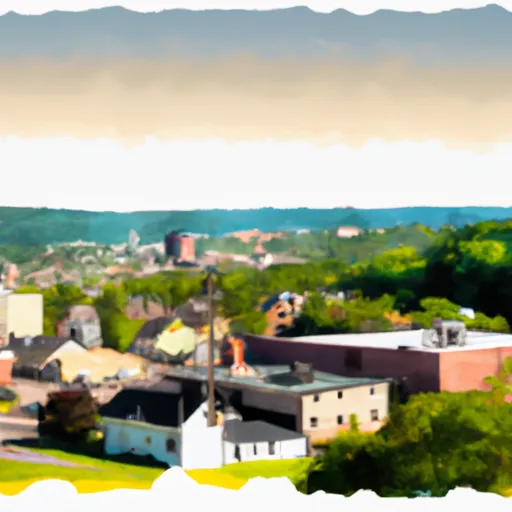-
 Snoflo Premium
Snoflo Premium
Get unlimited access to all our content
With no Ad interruptions! - Start Your Free Trial Login with existing account
Narvon
Eden Index
Climate
9.7
•
Recreation
4.6
•
Community
1.1
•
Safeguard
5.8/10

Narvon, Pennsylvania is a small rural community located in Lancaster County. The climate in Narvon can be described as a humid continental climate, characterized by hot summers and cold winters. The average high temperature in the summer months is around 85°F (29°C), while winter temperatures can drop to an average low of 20°F (-6°C). The area experiences moderate rainfall throughout the year, with the wettest months being May and June.
Hydrology constituents in Narvon are primarily influenced by the surrounding landscapes and waterways. The region is home to several creeks and streams, including the Pequea Creek and the Conestoga River, which provide opportunities for fishing and water-based activities. Additionally, there are numerous ponds and small lakes in the area that offer recreational opportunities such as boating and swimming.
Outdoor recreation opportunities in Narvon are abundant. The area is known for its picturesque countryside, making it an ideal destination for hiking, biking, and horseback riding. There are several parks and nature preserves nearby, including the Middle Creek Wildlife Management Area, which is popular for birdwatching and wildlife observation. The rolling hills and scenic landscapes also attract photographers and nature enthusiasts. Overall, Narvon offers a tranquil and scenic environment for outdoor recreation and nature exploration.
What is the Eden Index?
The Snoflo Eden Index serves as a comprehensive rating system for regions, evaluating their desirability through a holistic assessment of climate health, outdoor recreation opportunities, and natural disaster risk, acknowledging the profound impact of these factors on livability and well-being.
Climate Health Indicator (CHI): 9.7
Narvon receives approximately
1178mm of rain per year,
with humidity levels near 76%
and air temperatures averaging around
12°C.
Narvon has a plant hardyness factor of
6, meaning
plants and agriculture in this region thrive during a short period during spring and early summer. Most
plants will die off during the colder winter months.
By considering the ideal temperature range, reliable water supplies, clean air, and stable seasonal rain or snowpacks, the Climate Health Indicator (CHI) underscores the significance of a healthy climate as the foundation for quality living.
A healthy climate is paramount for ensuring a high quality of life and livability in a region, fostering both physical well-being and environmental harmony. This can be characterized by ideal temperatures, reliable access to water supplies, clean air, and consistent seasonal rain or snowpacks.
Weather Forecast
Streamflow Conditions
Lower Susquehanna
Area Rivers
Lower Susquehanna
Snowpack Depths
Lower Susquehanna
Reservoir Storage Capacity
Lower Susquehanna
Groundwater Levels
Recreational Opportunity Index (ROI): 4.6
The Recreational Opportunity Index (ROI) recognizes the value of outdoor recreational options, such as parks, hiking trails, camping sites, and fishing spots, while acknowledging that climate plays a pivotal role in ensuring the comfort and consistency of these experiences.
Access to outdoor recreational opportunities, encompassing activities such as parks, hiking, camping, and fishing, is crucial for overall well-being, and the climate plays a pivotal role in enabling and enhancing these experiences, ensuring that individuals can engage in nature-based activities comfortably and consistently.
Camping Areas
| Campground | Campsites | Reservations | Toilets | Showers | Elevation |
|---|---|---|---|---|---|
| Locust Lake State Park | None | 1,260 ft | |||
| Mauch Chunk Lake County Park | None | 1,050 ft |
Nearby Ski Areas
Catastrophe Safeguard Index (CSI):
The Catastrophe Safeguard Index (CSI) recognizes that natural disaster risk, encompassing floods, fires, hurricanes, and tornadoes, can drastically affect safety and the overall appeal of an area.
The level of natural disaster risk in a region significantly affects safety and the overall livability, with climate change amplifying these risks by potentially increasing the frequency and intensity of events like floods, fires, hurricanes, and tornadoes, thereby posing substantial challenges to community resilience and well-being.
Community Resilience Indicator (CRI): 1.1
The Community Resilience Indicator (CRI) recognizes that education, healthcare, and socioeconomics are crucial to the well-being of a region. The CRI acknowledges the profound impact of these elements on residents' overall quality of life. By evaluating educational resources, healthcare accessibility, and economic inclusivity, the index captures the essential aspects that contribute to a thriving community, fostering resident satisfaction, equity, and social cohesion.

